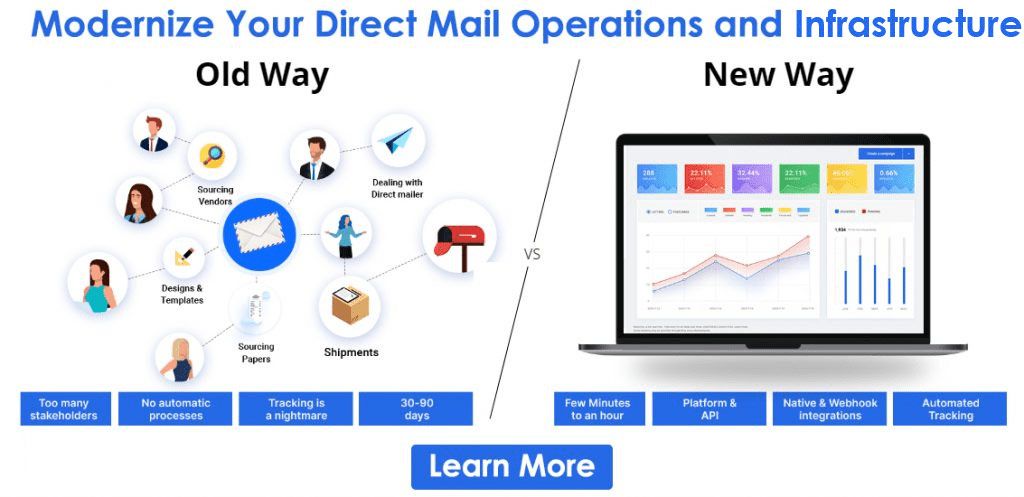GDPR Postal Mailing Lists
GDPR Postal Mailing Lists
For a long time, businesses have been using customer data at their discretion. Earlier, customers had no say in how their data was used and by which companies. However, modern-day marketing has seen some sharp changes in the last decade. More and more data privacy laws are coming up every day—ensuring customer data security and confidentiality. Now, customers can decide whether businesses can use their personal information for marketing purposes.

GDPR is one such data protection law introduced by the European Union (EU) in 2016. It was brought into force on 25th May 2018. Since then, businesses are required to handle personal data with complete security. There are many ways in which GDPR has affected the marketing operations of companies. Though GDPR focuses on email marketing majorly, direct mail marketing is also under its jurisdiction in many ways.
In this blog, we will discuss how GDPR affects direct mail and how to avail of and use GDPR postal mailing lists.
What Is GDPR?
Basically, General Data Protection Regulation (GDPR) is a law passed by the EU on data privacy and protection. It focuses on the customer data of EU and EEA residents specifically. Moreover, the transfer of customer data outside the EU and EEA regions is also covered under GDPR.
The main aim of passing the GDPR law is to put customers back in power regarding their own personal data. Individuals (also called data subjects) are given the right to control their data and decide how they want it to be used. Hence, businesses (also known as data controllers as they control personal data and decide on how to process it) should take care to abide by the GDPR rules while dealing with personal data of EU and EEA residents, irrespective of where they are based themselves.
If any company fails to comply with GDPR, it will be held accountable by the Information Commissioner’s Office (ICO). Any data breach or data protection violation can result in legal action, and the accused business would have to pay penalties running in millions of euros.
Social media, email, and postal marketing under GDPR all require consent, legitimate interest, and relevant purposes to be compliant.
GDPR and Postal Mailing Lists
Does GDPR affect postal marketing in any way? Definitely, but the fact that GDPR has dictated so many rules and regulations regarding email marketing and email mailing lists that most people think it has nothing to do with direct mail. However, there is a lot to know about GDPR and postal mail.
The GDPR rules may seem vast and a bit extreme, especially to small-scale companies. In reality, there are only three aspects under GDPR that marketers need to think and do something about:
Data Consent
Data consent or data permission is all about the way you manage opt-ins for sending marketing messages. Marketers can no longer assume that a person wants to be contacted by them. Under GDPR, individuals need to express their consent in a free, unambiguous, informed, and specific manner. It means that they need to confirm their consent physically. You must always make sure that you have obtained their consent actively for sending emails and not just assume that they want to be contacted.
Coming to postal marketing GDPR, the rules state that marketers need not obtain explicit consent from individuals to send them direct mail. Therefore, direct mail marketing has a larger scope than email marketing nowadays. You can skip through the entire opt-in process and start mailing speedily. But, there’s a catch. You can only mail to people that have a vital or legitimate interest in your brand.
The term “legitimate interest” was invented to control GDPR postal marketing activities. Since GDPR does not require direct mail marketers to obtain users’ explicit consent, spam mailing could have become common. In order to control spam mailing, companies were required to consider the legitimate interests of individuals to send them anything via postal mail.
Hence, you cannot send a direct mail item to anyone. The person must have shown interest in your brand in some way or the other. It could be through an inquiry on your website or an email. Another way that creates a legitimate interest is when the individual’s personal details fit perfectly with your customer profile. Legitimate interest is similar to implied consent and also includes your already existing customers as they have already bought from you (shown interest).
Data Access
This aspect talks about the opt-out mechanism. Despite sending emails only to customers that have opted in, marketers need to include an opt-out link in all their marketing emails. This way, customers will have complete control over when their data is being used and for how long. Furthermore, they can opt-in and opt-out at any time as per their wish, which gives them ultimate control over their personal data.
There is something called the “right to be forgotten.” People can now access their own data and possess the right to have inaccurate and outdated personal data removed from a company’s database. Therefore, marketers must always have a system in place to allow users to access their data and withdraw their consent for use at any time.
GDPR postal marketing consent also works in the same way when it comes to opt-outs. Though you did not obtain the explicit consent of your prospects and customers to send them direct mail items, you should come up with an opt-out method.
Data Focus
Oftentimes, marketers tend to collect a lot of information about their prospects and existing customers. But, they might absolutely not need that amount of information to conduct a marketing campaign around their products and services. GDPR restricts this practice of collecting irrelevant and additional data and storing it for no practical purpose.
You need to justify why you need certain personal details about individuals. If you really need them, you can continue asking the users for them and processing them. Otherwise, collecting and storing unnecessary data can land you in trouble.
As direct mail marketers, too, you need to focus only on the data you require, not the data you want to collect. Again, consider the legitimate interests of individuals before sending them anything.
Your Responsibilities Towards Building GDPR-Compliant Postal Mailing Lists
GDPR does not state what can and cannot be considered as a legitimate interest. Therefore, the entire process of identifying legitimate interests and building GDPR postal mailing lists is ambiguous and can lead to possible violations. So, what can you do to avoid taking such risks? You need to fulfill your basic obligations towards postal marketing and GDPR in the following ways:
- Explain your true mailing purpose to the recipients. Additionally, mention the benefits of your mail clearly.
- Justify the basis on which you identify legitimate interests. Is the base an inquiry form on your website, or an incoming phone call, or both? You need to be clear with what creates a legitimate interest.
- While using the personal data of customers, explain its necessity.
- Bring in an opt-out system so that all your direct mail recipients have the freedom to stop receiving unsolicited mail. Though you can skip the opt-in process, having an opt-out system in place can help you in several ways.
- Make sure that you exclude the names and mailing addresses of all individuals from your mailing lists who have opted out voluntarily. In short, honor your own opt-out system.
- Review the operations of all your third parties who indirectly process customer data. Take care to share only the relevant details with them. Be certain that they absolutely need the information being shared with them. Plus, check how they process personal information and for how long they store it.
- Always be alert while using customer data. You need to know about the steps to be taken in case of any data violation or data breach. Hence, read the GDPR postal marketing rules and stay informed.
- Analyze all positive and negative responses. Customers that express disinterest in your brand should be excluded from all mailing lists.
- Draft a privacy policy. It should include your company identity and contact details, along with the methods you use to collect, store, and process personal data. Also, mention the customer rights over their data and the time duration for which you will be storing it. A disclaimer as such can help you stay out of potential legal hassles.
- Understand the personal data you collect and the ways in which it is processed. Review whether you actually need it and make sure to store and use it securely.
- Avoid using sensitive information in your direct mail content, such as someone’s religion, race, or sexuality.
Benefits of GDPR Postal Mailing Lists
It might look like the GDPR rules and regulations are too complicated to follow and have restricted marketers in several ways. But, these rules have done quite the opposite, especially when it comes to postal marketing.
GDPR aims to offer individuals the right to data privacy and protection while also allowing businesses to target their relevant audience. GDPR postal direct marketing allows marketers to focus only on interested and relevant prospects. It increases your mailing lists’ quality and enables you to conduct highly targeted and productive direct mail campaigns. You can save a lot of money, time, and effort by only reaching out to people who are happy to receive your mail and likely to respond.
Furthermore, GDPR does not ask marketers to obtain explicit consent from their prospects. Therefore, you can mail to all the people who aren’t responding to your emails and social media advertisements (of course, based on legitimate interests). This way, not only can you skip the opt-in phase but also add an extra touchpoint to your marketing strategy.
Last but not least, you can increase your brand reputation by abiding by the GDPR rules on postal marketing. By being transparent regarding the collection and use of personal data, you can earn the trust of your existing and potential customers.
PostGrid and GDPR Compliance
It can sometimes be difficult to stay updated on all the GDPR laws and build your mailing lists accordingly. We have already established that any kind of violation can result in legal action and heavy penalties. Hence, all direct mail marketers are mandated to understand and follow GDPR.
Does GDPR cover postal marketing? Yes, but you can make the compliance process simple. PostGrid is compliant with HIPAA, PIPEDA, SOC-1, SOC-2, and several other data security and privacy laws. Hence, it can help you print and mail legally, securely, and confidently.
Using PostGrid’s automated direct mail API, marketers need not worry about the postal direct marketing GDPR rules. They can automate all their offline direct mail activities and comply with all the laws related to direct mail marketing, including GDPR.
There are several other things you can do with PostGrid other than staying GDPR compliant and avoiding legal issues. You can build mailing lists from scratch, segment your audience using certain demographics, design your direct mail using pre-built templates, get all your mail pieces printed through a reputable printer and mailed on time. Plus, you can track the results.
Want to conduct a legal, successful, and fruitful direct mail marketing campaign? PostGrid’s print and mail solutions can make it happen.
Ready to Get Started?
Start transforming and automating your offline communications with PostGrid
The post GDPR Postal Mailing Lists appeared first on PostGrid.
Via https://www.postgrid.com/gdpr-postal-mailing-lists/
source https://postgridplatform.weebly.com/blog/gdpr-postal-mailing-lists
source https://irenevines.tumblr.com/post/659157351563198464



Comments
Post a Comment